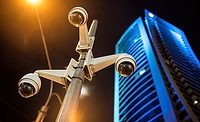
Category 5 twisted pair cable (Cat5) now supports video, low voltage power and RS422 provided vendor-specific cabling guidelines are followed. This has opened up the possibility of powering and controlling analog security video cameras remotely via standard twisted pair cable. The support for copper twisted pair for the above signals has led to the problem of how to manage these multiple signal pairs within the context of a structured cabling system.
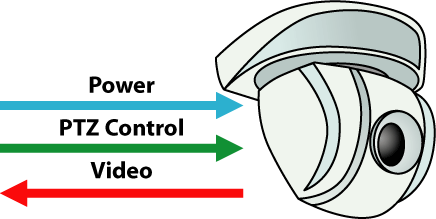
The issue
The main issue in using DVR-based solutions for supporting power, video and control via Cat5 is how to efficiently combine and break-out the appropriate signal pairs to and from each camera without resorting to cable splicing techniques along the home-run cable itself. Similarly, at the central monitoring side, the same signals must be merged onto the Cat5 cabling system for distribution to each camera (see Figure 2).
For example, each camera requires at least one twisted pair for video. If the camera is powered from a central console, then one or two extra pairs is required. If the camera supports PTZ control, then a fourth pair is needed. Since not all cameras require all three signals, it is necessary to combine and extract the desired signals depending on the type of camera connection.

Maximum distance
In regard to the issues involved in security video signal concentration, one of the main issues is distance performance. The critical signal is remote power; video and control will normally surpass remote power in terms of distance. Remote PTZ control can usually be transmitted up to 4,000 feet, video up to 2,200 and 1,500 feet with analog monitors and DVR, respectively. Remote power distance depends on a number of factors, including cable grade, cable gauge, input voltage level, camera power consumption, and permissible voltage drop at the camera.
The second issue in regard to power is short circuit protection. Cat5 twisted pairs are often terminated under RJ45 plugs and jacks where accidental short circuits can occur more easily. In order to protect against this, power supplies with individually fused outputs are highly recommended. Furthermore, since security video remote power may now reside under cable jackets that carry other voice and data services, there is a greater need to protect the cabling. Companies such as Altronix (Brooklyn, N.Y.) carry Class II power supplies that meet this requirement. According to one installer, institutions such as schools and hospitals insist on fused or over current circuitry protected power supplies in a security video installation.
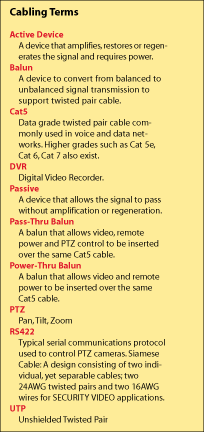
Methods of combining
The integration of video, power and control over Cat5 requires products that combine and break-out the three signals into their respective services in order to route them to the appropriate equipment. In a hybrid system, it is necessary to specify products that will integrate easily into a structured cabling system.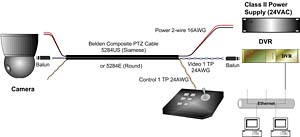
Another option is the use of security video pass-thru video baluns, which consolidate video, remote power and control under one Cat5 cable. The baluns allocate two or three twisted pairs for power depending on the model. Fixed cameras allow for three twisted pairs for power. PTZ cameras allow for two pairs for power.
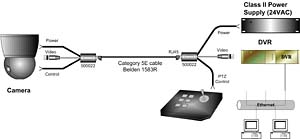
As the security video industry heats ups, installers and contractors are looking for more cost-efficient cabling solutions without compromising on quality and reliability. Improved cable and video balun technology are bringing this goal closer to reality. For more information readers should consult a local security video specialist.
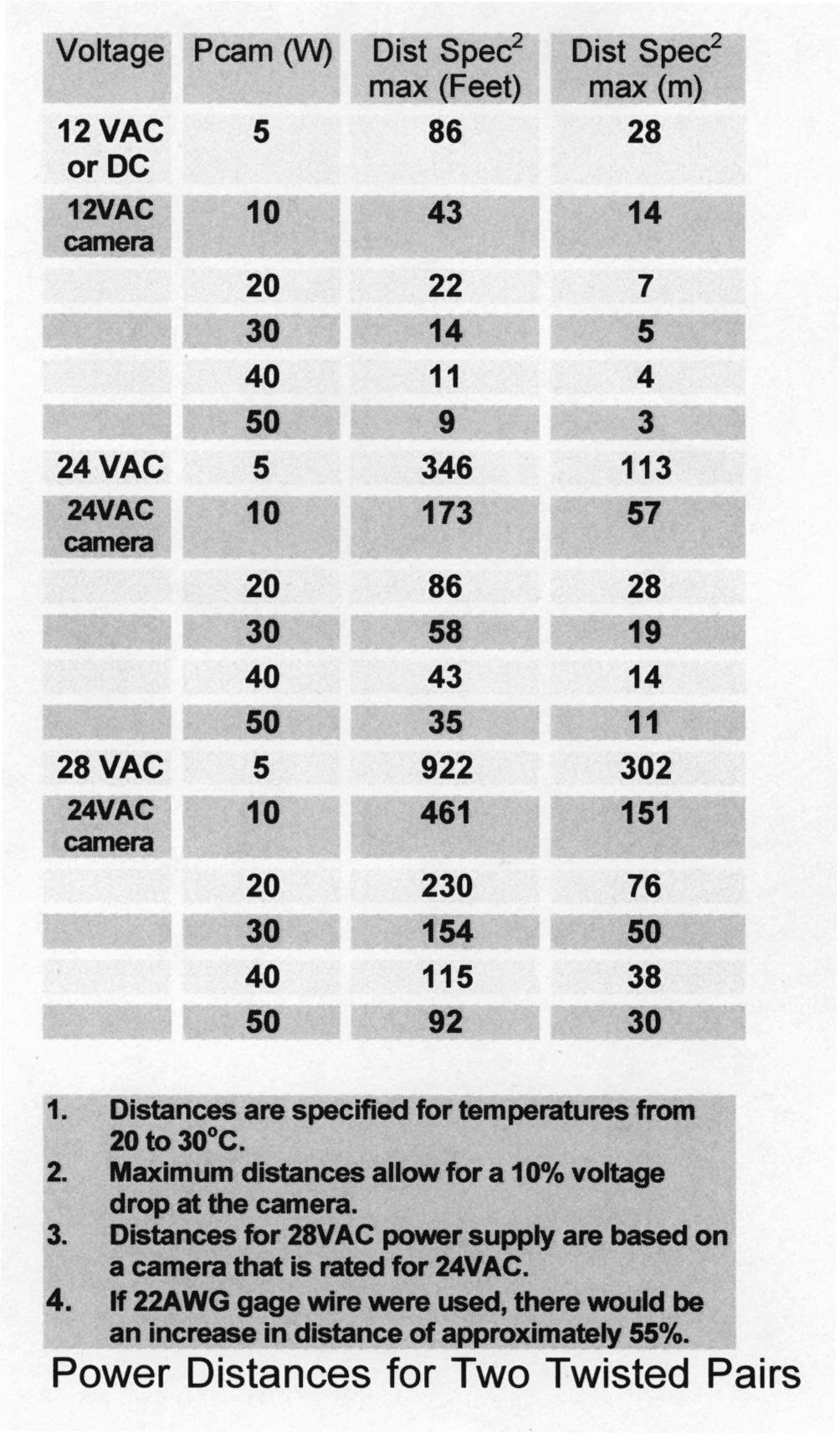
Need more info?
There are two special tables related to this article and available on the Security magazine Web site at www.securitymagazine.com. Just click on the March 2005 archive and go to this article or search online using Security’s LINX connection.The tables online illustrate the distance performance based on two- or three-pair Cat5 transmission of remote power. Based on this information, it is possible to determine what is the maximum distance that can be supported under actual conditions. The tables also specify the maximum distances that remote power may be transmitted via two or three twisted pairs.
In order to construct these tables, the following assumptions were made:
- Distances are specified for temperatures from 20 to 30 degrees Celsius.
- Maximum distances allow for a 10 percent voltage drop at the camera.
- Distances for 28VAC-power are based on a camera that is rated for 24VAC.
- If 22AWG gage wire were used, there would be an increase in distance of approximately 55 percent
Elsewhere in this issue there is an article on Power Over Ethernet which discusses cost savings and factors of concern to a security executive’s IT colleagues.
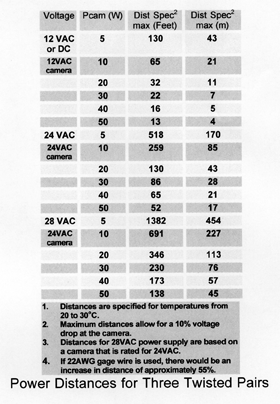
Security magazine also boasts a useful online Buyers Guide which lists sources of products, systems and services ranging from access control and communications to security video and burglar alarms. The Security magazine Buyers Guide includes officer, premises, investigative and office products as well.Also check out ISC West, Apr. 5-8, at www.iscwest.com.
